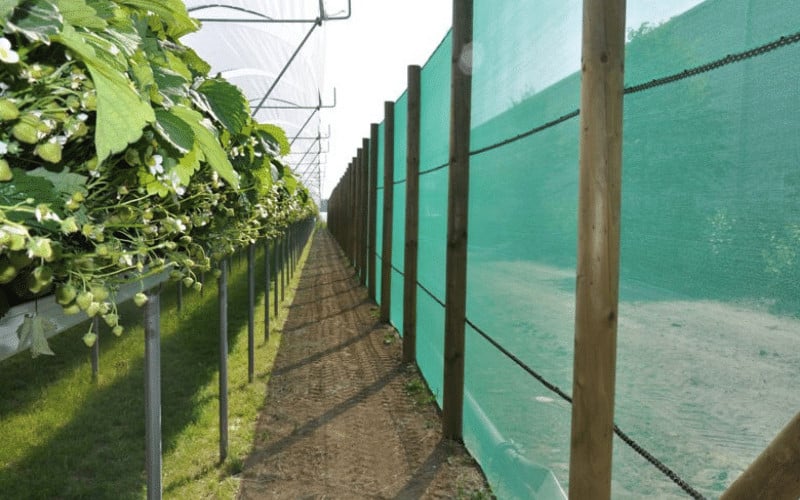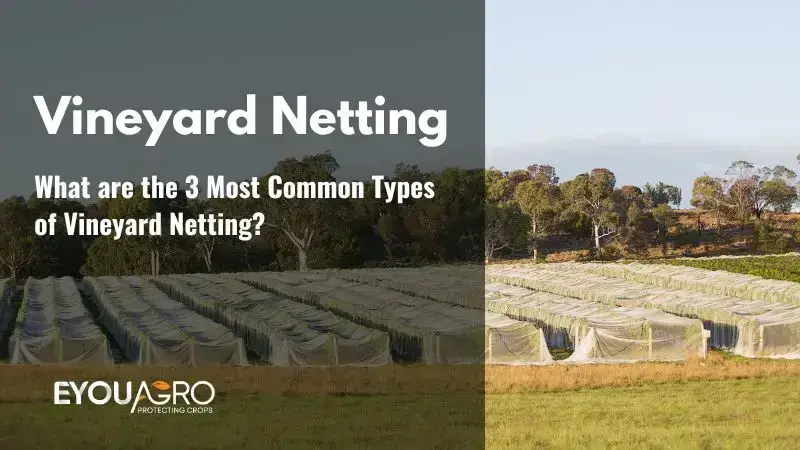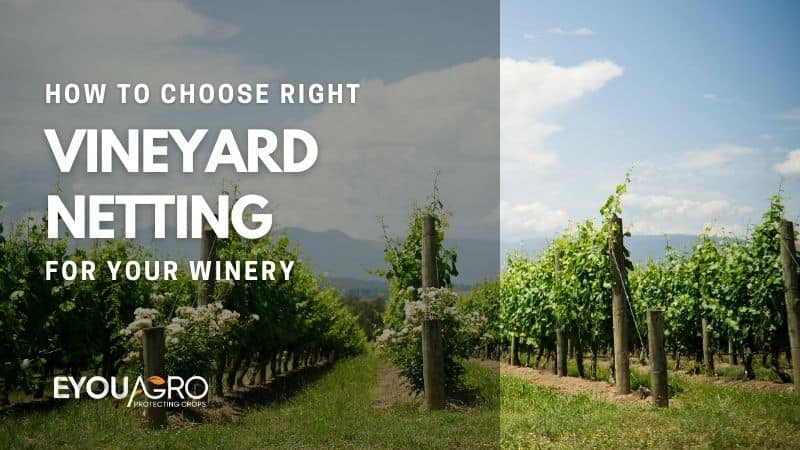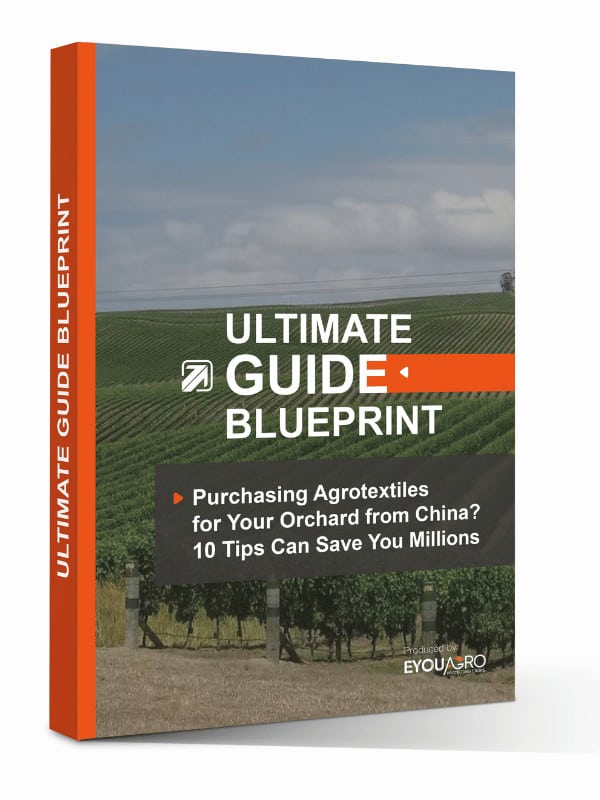Cultivating any plants and citrus, for that matter, is not an easy task. You need to conduct every growth stage with great care lest you end up with little to no harvest.
Among the critical protection measures, you should conduct on your citrus fruits is wind protection.
The harm that winds can do to your citrus fruits is unfathomable. Winds howling at 39 miles per hour can damage the fruits and snap branches.
Fortunately, to keep these damages at bay, you can use wind protection netting.
Down below is comprehensive information on wind protection netting for citrus fruits.
What are Citrus Fruits?
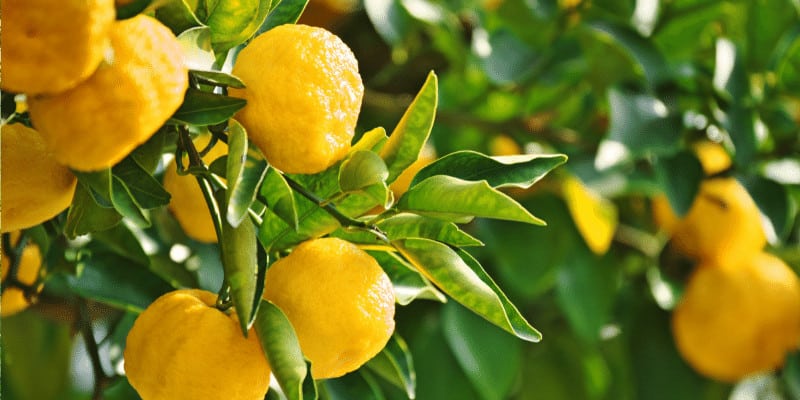
Citrus fruits are harvests of the citrus tree, a genus that comprises lemon, lime, grapefruit, and orange.
It mostly grows in subtropical areas; however, farmers and gardeners in regions that aren’t subtropical can grow citrus trees in containers.
Moreover, citrus trees should be grown in a sunny, wind-protected area with adequate moisture levels.
For fruit production, you only need a single tree since citrus trees are self-fertile.
Soon after you plant your citrus tree, you can expect to start harvesting citrus fruits after 3-5 years. However, how soon you reap your fruits will depend on factors like the type of citrus tree, the climate, the care you give trees, and the cultivar.
It would be best if you adequately space your citrus trees, putting in mind their potential growth size during planting, to avoid overcrowding.
How Wind Affects Citrus Trees
Gently blowing winds are good for your citrus trees since they boost healthy trunk growth. However, howling winds moving at 40 miles per hour or more can damage your plant’s leaves, branches, fruits or even uproot the whole tree.
Some signs of wind damage like broken branches and leaves are visible. Some, however, are not too obvious until you harvest your fruits.
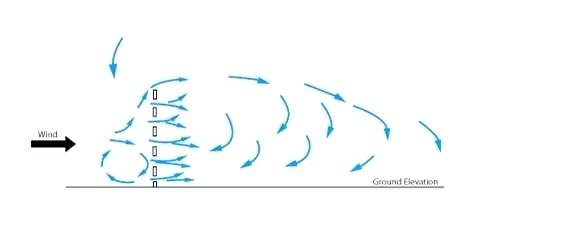
Other measurable, visible wind effects on citrus trees include:
- Ground-level bark damage.
- Slow growth rate.
- Little to no fruits on the side of the tree facing the wind.
- Broken and bent trees.
- Slow growth rates.
- Fallen fruits.
- Root injury on young trees.
- Decreased yield.
- Blemished leaves and scarring on the surface of the fruit.
The invisible effects which result from reduced temperatures and relative humidity cause heightened transpiration and evaporation. In the end, this will cause the leaves to wilt because the tree is not getting enough water. Even if you decide to water your citrus tree, the winds will eventually dry it out. The optimal solution would be to get your citrus trees a wind protection netting.
How to Protect Your Citrus Trees From Wind
It would be disheartening to lose your citrus trees to wind damage after putting in all the cultivation efforts, especially since growing citrus trees can take up to 10 years before you realize massive yields.
To avoid wind damages, you’ll need to conduct the following necessary wind protection measures:
Installing Windbreak Netting
Among the practical measures, you can employ to keep wind damages at bay is installing windbreak netting.
Windbreak netting will change the wind’s course and reduce wind speed, thus reducing fruit scarring and water loss by evaporation.
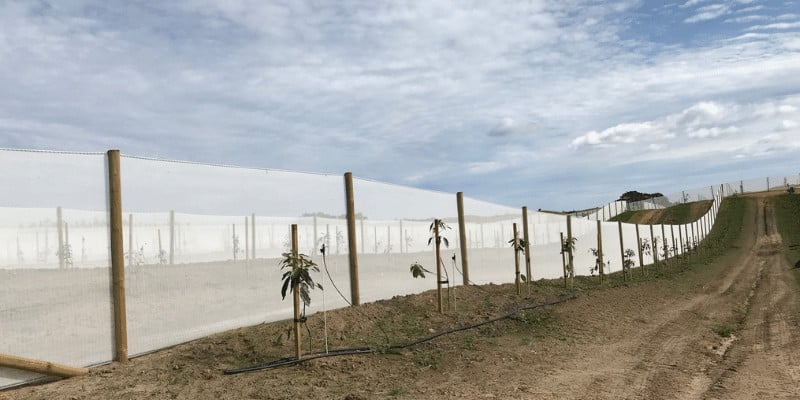
Planting Natural Windbreakers
This wind-blocking measure involves using other trees or shrubs to block and break wind. It does not have to totally keep off the wind, as long as it decelerates the speed of the wind.
Aside from wind protection, natural windbreakers also protect against soil erosion.
Keeping the Moisture Levels of the Soil High
Strong, fast-moving winds increase transpiration and evaporation rates in citrus plants as well as any other plant. This action will eventually dry out the plant and its roots, making it brittle.
Therefore it is essential to keep moisture levels at a maximum by increasing the richness of the soil and providing mulch. Rich soil tends to retain moisture more than deprived of richness soil.
Pruning Your Citrus Trees Often
Pruning your citrus trees more often will decrease their surface area. Thus, when strong winds strike, it will catch them less. Pruning will have fewer branches breaking as a result of fast-moving winds.
It is also essential that you prune dead branches, so they don’t scar the leaves and fruits when it gets windy.
The key areas to focus on when pruning to keep wind damage include the canopy, upright branches, and lower branches.
Role of Windbreak Netting in Growing Citrus Fruits
The role of windbreak netting is to provide long-lasting, reliable wind cover for seedlings and growing plants. They can provide your citrus trees up to 35%-75% wind protection.
Depending on your needs, the citrus plants growth stage, the size of your citrus garden, and the percentage of wind protection your citrus plants require, you can select windbreak netting as follows:
- Flexible windbreak netting provides 50%-55% wind reduction.
- Knitted windbreak netting provides 35%-75% wind protection.
- Extruded windbreak netting provides 50%-60% wind protection.
Windbreak Netting Features
Windbreak netting is made out of high-density polyethylene. A crystalline thermoplastic polymer. Hence, high-density polyethylene windbreak should possess the following features:
- Weather resistance.
- UV stabilization.
- Rot and chemical resistance.
- Durability.
- Fray and sag resistance.
Installation and Accessories
Among the key advantages of using windbreak netting to protect your citrus plants and fruits against wind damage is that you can easily install it whenever needed.
To install it, you will need fasteners and hooks.
hooks. Cable ties are the preferable fasteners to use with windbreak netting since they’ll securely hold the net in place without damaging it. Hooks will come in handy when trying to keep the net in place to the poles before securing it with cable ties.
Install your windbreak netting by simply attaching it using cable ties to either wooden fence posts or chain link fencing.
Make sure that you install your wind protection netting securely in place.
Where to Buy the Netting
You must purchase any product and not just wind protection netting from a reliable and trustworthy manufacturer/supplier such as EyouAgro.
To do this, surf the internet for windbreak netting manufacturers, then narrow it down to the ones who meet your needs, wants, and requirements.
After that, you can discuss netting tailoring and price negotiations.
Warranty
An important consideration you should make before purchasing wind block netting is its warranty period. In most situations, a durable product will have a reasonable and fair warranty period.
Most manufacturing companies, however, provide a five-year warranty period for their windbreak netting products.
Conclusion
Citrus trees take up to six years to get to the fruit-bearing phase. Therefore, as a gardener, your significant responsibility is to take proper care of it till then. Otherwise, you will end with little to no citrus fruits.
Wind protection is among the essential cares to bestow upon your citrus trees and fruits. If you are unsure how to do it, use the above information on wind protection netting for citrus fruits as a guide.
EyouAgro windbreak netting is a major component of successful citrus fruit growing. Contact us at www. eyouagro.com or visit us at info@eyouagro.com.

